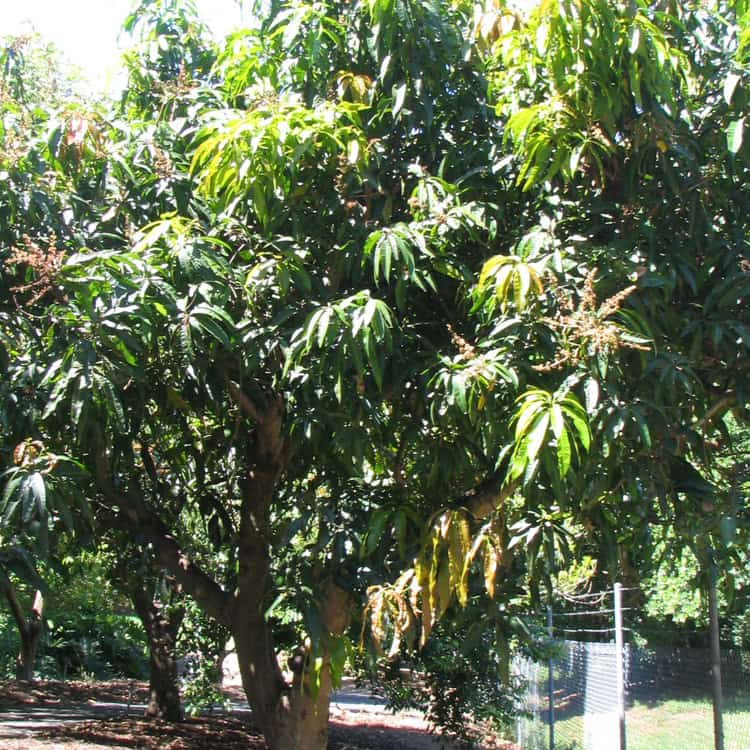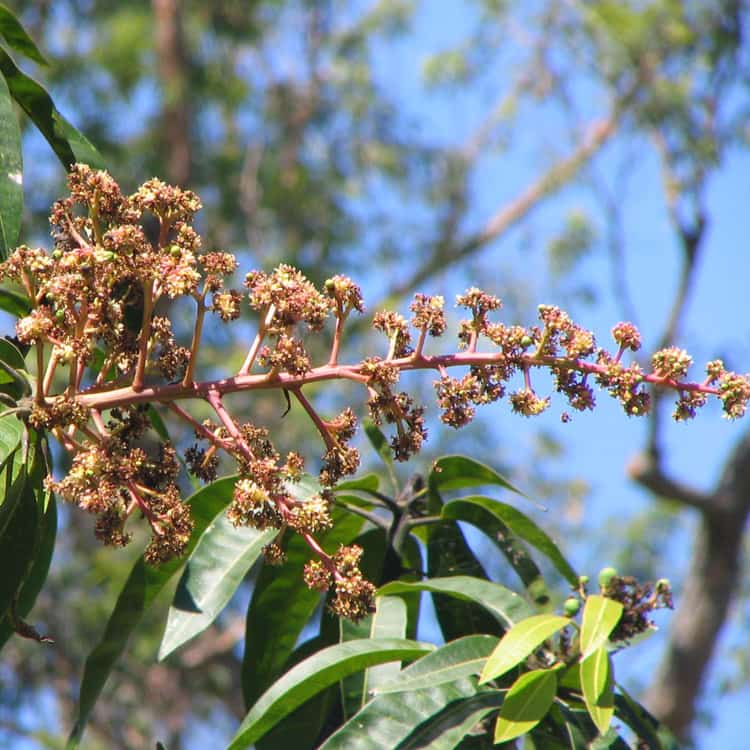Seek medical attention if exposure causes significant symptoms.
Description
An evergreen tropical tree to 30m with a dense canopy and grey brown bark, cultivated in gardens and commercially grown for its edible fruit.
Flowers are fragrant, small, cream coloured with five petals, and clustered in terminal panicles.
New leaves are pinkish red maturing to a dark glossy smooth green up to 35cm long and 7cm wide, lance shaped and tapering to a point; leaves are alternate, simple and prominently veined.
Toxicity
Symptoms
Contact with the sap, wood, sawdust, bark or fruit can result in dermatitis including rash, swelling, itching and blistering. Peeling and eating the fruit can affect the hands and skin around the mouth.
Images


Details
Common name: Mango
Botanical name: Mangifera indica
Family: Anacardiaceae
General description: An evergreen tropical tree to 30m with a dense canopy and grey brown bark, cultivated in gardens and commercially grown for its edible fruit.
Flowers: Flowers are fragrant, small, cream coloured with five petals, and clustered in terminal panicles.
Leaves: New leaves are pinkish red maturing to a dark glossy smooth green up to 35cm long and 7cm wide, lance shaped and tapering to a point; leaves are alternate, simple and prominently veined.
Fruit/Berries: The fruit is oval to elliptical, smooth-skinned and either yellow, orange green or red in colour with yellow flesh, up to 25cm long and up to 10cm in diameter. The flattened seed is somewhat bearded, 4-7cm long, 3-4cm wide, and 1cm thick.
Other: Fruit is edible but skin should be removed first.
Last updated: July 2023